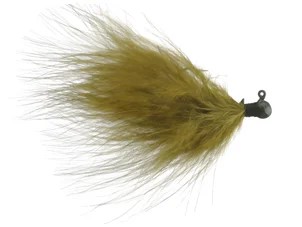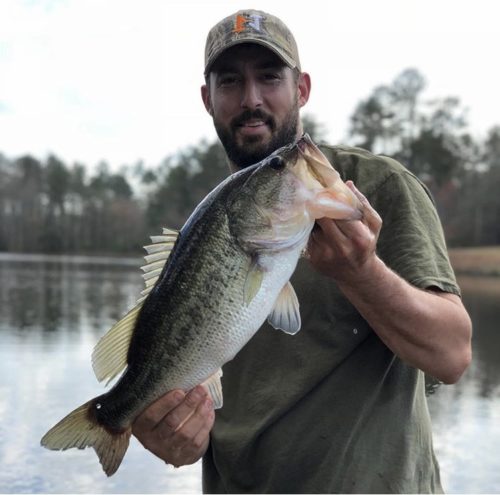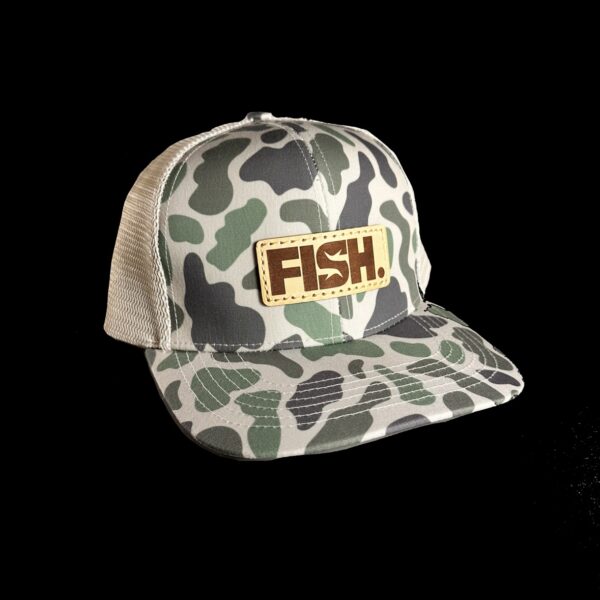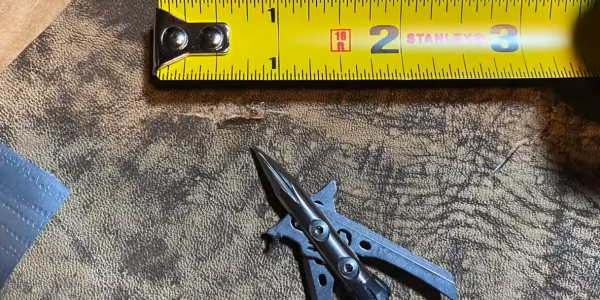Bass fishing is exploding in popularity, thanks in part to the internet and social media. With that popularity comes much talk and interest in which lures and strategies work well to put a hook N1 and land that big bass.
So, let’s talk about a lure and type of fishing that has been around for ages… jigging.
So, let’s cover some of the best types of jigs for bass fishing and also some of the modernization that is taking place regarding this traditional style of bass fishing.
(All images courtesy of Tackle Warehouse listings)
Casting Jigs

Casting jigs are not only the most common, but also very versatile.
We kick off our list with the most common in the bass fishing world. Casting jigs keep it simple and are very versatile. The jig heads are made in a way to stand the jig up when resting on the bottom while also swimming well with a slower pace.
The best sizes range from ¼ to ½ ounce with a happy medium being ⅜ ounce. These can be used for pretty much any subspecies of bass, so the versatility is there. These can be paired with craws, grubs, or other trailers to give even better action.
Swim Jigs

Swim jigs provide action while on the move and work with many types of bass.
One of the most popular jig styles in the bass world right now is the swim jig. Swim jigs, as the name implies, are meant to have some pace and provide action while on the move. It is similar to using a spinnerbait or any other moving lure.
The head of the jig is designed in a way to cut through the water and provide excellent action when moving the lure. The hooks are light and sharp, and when a bass is committed, you are in for a ride. This is another type of jig that works for most types of bass, so keeping it versatile can make it happen with the swim jigs.
-
Sale!

N1 Outdoors® Put A Hook N1™ Trout Long-Sleeve Tee
Original price was: $28.99.$5.00Current price is: $5.00. Select options This product has multiple variants. The options may be chosen on the product page -

N1 Outdoors® Est. 2014 TriBlock Bottomland Camo Performance UPF 50+ Shirt
Price range: $37.99 through $39.99 Select options This product has multiple variants. The options may be chosen on the product page -
Sale!

Put A Hook N1™ Hydroglyphic™ Bass Fishing Tshirt
$5.00 Select options This product has multiple variants. The options may be chosen on the product page
Finesse Jigs

The head of a finesse jig looks different than other jigs, highlighting action near the hook and head.
The finesse jig is one that gets a bit more specific in the approach. This one has the most unique look, but it is still not all that different. The jig head is much smaller and the weight should not be very heavy. If you are going over ¼ ounce, it will be considered a large finesse jig.
The skirt is tied in a way to give action down by the hook and up above the jig head. So, when you are fishing slower and in holes, the subtle action will be very enticing.
Finesse jigs can be used for largemouth, but river smallmouth love to hop all over this presentation. It can be complemented with a subtle trailer that does not take too much action away from the skirt.
Flipping Jigs

Flipping jigs tend to be a bit heavier than other jigs, helping them in working structures deep in the water column.
Another more specific presentation revolves around the flipping jig. Flipping structure is a great way to get huge largemouth bites. Largemouth love to cling to structure, and flipping jigs have been engineered to enter these areas and leave with a monster on the other end.
These are usually a bit heavier because the jig needs to get down in the water column and dive into the structure.
So, spring for a ⅜-⅝ jig depending on the body of water. In places like Texas and Florida, some anglers even go up to a full ounce for a flipping jig.
The creature bait trailer is super important for flipping jigs. This is where the true action is. When you can put a craw or chunk on the end, it will be like an actual creature is falling through the structure.
So, line up your colors, and put a fair bit of effort into your trailer.
-

N1 Outdoors® HIKE. Foam Trucker Leather Patch Rope Hat
$29.99 Select options This product has multiple variants. The options may be chosen on the product page -

N1 Outdoors® N-Tune™ Patch Trucker Rope Hat (Gray & Black)
$26.99 Select options This product has multiple variants. The options may be chosen on the product page -

N1 Outdoors® RodTogs™ Patch Trucker Visor (Red w/White Mesh)
$26.99 Select options This product has multiple variants. The options may be chosen on the product page
Football Jigs

Football jigs have heads similar to a football shape, allowing them to more easily navigate hard structures.
The football jig gets its name from having a jighead that resembles the shape of a football. When fishing rocky bottoms and areas with a lot of hard structure, these are great jigs. This is because they tend to hop off of those elements rather than get stuck in them.
Another aspect of the football jig is the weed guard. A couple of the other jigs on the list have them as well, but they are generally beefier on the football jig. Because you will be in the structure, you need that extra protection. Plus, don’t be afraid to go a little heavier with the weight so you can really get into the structure.
Also make sure you add a nice trailer to the jig for that really solid action. Matching up sizes and colors is the best way to get the most use possible out of your football jig.
Hair Jigs

The hair jig, although very traditional, should not be overlooked, especially for smallmouth bass.
Finally, there is the hair jig. This is one of the most underrated jigs on the market because it is not used often in the mainstream. A hair jig is a traditional lure that used to be all the rage. Although current technology and advances in the industry pushed the hair jig to the side, it is still an excellent presentation.
As the name implies, this is a jig head with long strands of hair-like materials covering the hook on the back. Whites and black and blues are great colors for creating bites. More so than any of the others, smallmouth love to target hair jigs. Especially in rivers and flowing water, hair jigs can help you target those larger smallmouth bass.
Generally, keep hair jigs somewhat light. You will not want to make it too heavy, because the action will start to falter. Since hair jigs are made to be pretty big, you don’t have to overcompensate with a heavier jig head.
Closing Thoughts
All of these jigs have differing uses due to the build and patterns on the jig itself. So, when you can specify your presentation to the environment you are in, you will be in a good position to get bites.
Whether you are fishing for smallmouth, largemouth, or any other subspecies of bass, fishing a jig in the right spots will bring some really great fishing memories.
So, use the information above to create useful presentations and start to catch those big bass! Good luck, and happy fishing.






















































